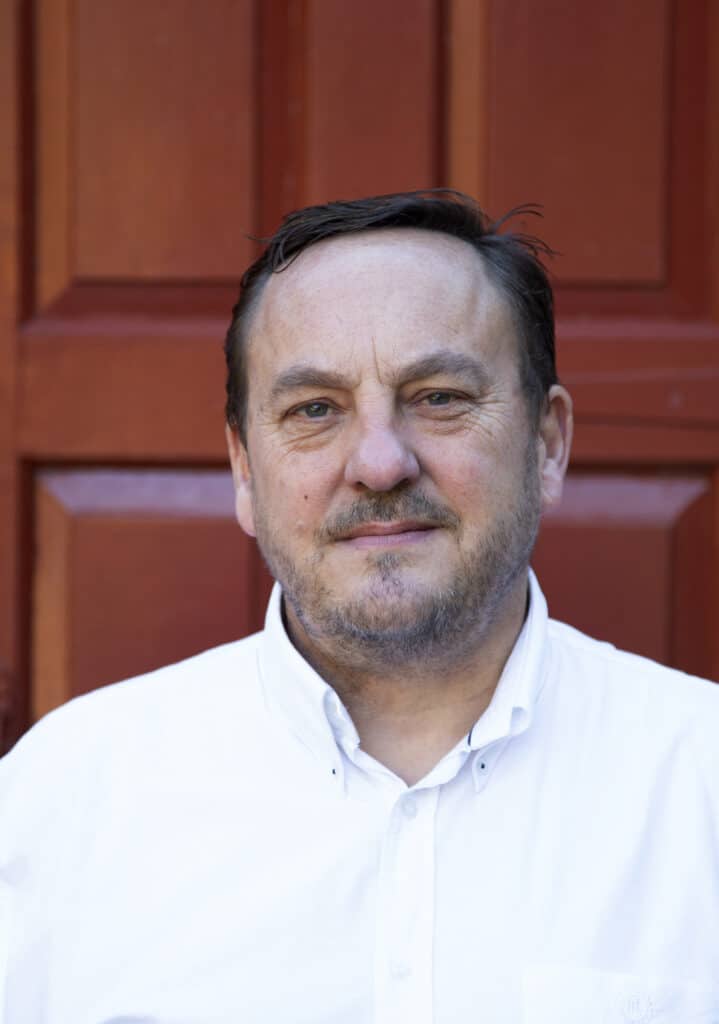When examining the career paths of senior company representatives, it is frequently the case that they regard their working lives as the result of following unscheduled opportunities that emerge on an almost spontaneous basis.
This could apply to the fascinating experiences of Pan RF business development manager Nick Hawke, who recalls the year 1994 as being a significant time that shaped his later decisions. Having worked for a company providing the mobile, track-side cameras for sporting events, he was also working as an extra for film production companies.
“I did around seven different films over two years and they were great fun, but then a friend of mine contacted me, who was running a cellular design company doing testing for mobile phone operations. They had a contract with Orange to survey sites for mobile phone masts, requiring panoramic views up to 22m, the maximum allowed height for a new mast.
“I could read a map and didn’t mind heights, so I was contracted into doing that job,” he says. “I then spent six months travelling around and taking panoramic pictures of each site and sending them to a radio planner to decide which one would be best for the phone mast.”
Mr Hawke then travelled to Holland, after the company won the contract to radio test surveys on proposed new mobile mast sites. “We would go to a site and set up the equipment, antenna and transmitter and that would be linked to a high-speed scanner in the back of our vehicle.
“We would then drive around the area to see how the radio signal propagated from that point. This led to us being asked to look at the Rai Exhibition Centre in Amsterdam, where we ended up designing and building one of the first distributed antenna systems in Holland,” he continues.
This was followed by further work in the UK and Belgium, before returning to the UK to work for Arkiva and assist with the management of shopping centres and upgrading systems from 2G to 3G coverage. “This led to a number of roles that you could describe as both poacher and gamekeeper, and my last gamekeeper role was working in the special projects team at O2 Telefonica. We managed all the large, shared infrastructure sites in the UK,” he continues.
Having gained considerable experience in the design and build of complicated communication systems, Mr Hawke then reconnected with Ross Hulley at the time he created the Pan RF business. He accepted Mr Hulley’s offer to begin work as the company’s project manager for its radio design contracts, before progressing to his current position with the business.

“Pan RF is quite a small company but it punches well above its weight and we sit just below the tier one businesses. Large real estate companies or public money typically fund tier-one companies. We’re raising funds to offer more flexible solutions for in-building connectivity so that they become part of the OP-EX spending for building owners, like how you pay for your mobile phone,” he says.
“Our first contract was with the Bloomberg headquarters in London, which was amazing, and we then won the contract for St James Quarter shopping centre in Edinburgh,” he continues.
These and other successful projects with notable clients and major facilities led to the company being chosen to provide the communications solution for the refurbished Battersea Power Station on the south bank of the River Thames. “We got to see that from the start of the project up to the finished product, which was amazing.
“That’s why I described Pan RF as punching above its weight, because we’ve managed to win a lot of business with some major players. Our latest is with the Old War Office in Whitehall, London, a new Raffles Hotel,” he continues.
In addition to its involvement with major projects, Pan RF continues to work within the enterprise space, where it delivers to clients including the Lidl supermarket chain as a leading supplier. In addition to some stores, the company has provided communications systems to the Lidl regional distribution centres around the UK.
Further to this, the company has also designed and installed systems within the BBC’s main facilities and Mr Hawke states that he would like to see the creation of more relationships with end clients. “Quite often we find work comes through a third party that is not able to design and build mobile connectivity, but once you get a relationship with an end client, that’s a much better position that allows us to build something they need, rather than what they’ve been sold,” he says.
An example of this is the Pan RF work at 22 Bishopsgate, which was completed in 2020 and claimed the title of London’s tallest building and numerous industry awards for its design and operation. It includes three levels of communication, Mr Hawke explains, beginning with wifi, supplemented by a second layer of cellular coverage and a third layer for the professional mobile radio solution.
He describes installing the cabling for the radio antennas, located at three-floor intervals throughout the imposing and truly smart building. Pan RF designed, installed and integrated the system that is the backbone for the facilities team communication in London’s vertical village.
“You really get to appreciate that you’re working in the tallest building in London,” he says. “And it was a similar story when we installed the PMR and Tetra systems in the new Tottenham Hotspur football club stadium.
“We designed and installed it, then had to test it and I did 33,000 steps in one day,” he continues. “As you get towards the top tiers of seating, the stadium expands, so you have to walk further to test every area of the bowl,” he explains.

Having been in the former White Hart Lane site as it was decommissioned, Mr Hawke then worked at the club’s training ground that includes a 33-bedroom hotel. The level of attention to detail and investment is provided as an example of the best means in delivering a top class facility that achieves all its stated aims, he says.
One of the emerging issues follows mobile operators withdrawing their support and investment in large in-building mobile projects in recent years to focus on delivering the macro infrastructure for the 5G network.
Tenants and leaseholders are unaware of the opportunities to invest in the communications networks within their facilities. This means that clients and tenants are missing an opportunity to invest in the connectivity solutions where they live and work.
“The investment within the industry has changed over the last five years. Where previously the mobile operators used to invest in mobile connectivity inside buildings, they’re more reluctant to do that now. There are also challenges with the 5G network, which operates at a frequency of 3.5 GHz and can be defeated by a wet paper towel in many cases,” he states.
Although an obviously humorous statement, Mr Hawkes explains that the operators have strict rules for the power to transmit signals, particularly for health and safety. “The reason that 900MHz chosen when 2G started was that it’s was part of the old TV spectrum, and there are not many TV masts around now.”
“This meant they could enjoy great propagation and build a GSM network economically. But as the frequency increases, the radio wave gets smaller, which means it’s more likely to be affected by glass, steel, concrete, etc, in buildings. That means that 5G connectivity can be difficult to get inside a building, but people want it, and that’s why they come to us,” he says.
There are various ways to resolve the issue. Still, the important aspect to appreciate is that the more popular 5G becomes, the harder it will be to deliver effective coverage inside buildings. One solution to the issue is to enhance the outdoor signal by bringing the outside signal inside your building, using an Ofcom-approved signal repeater or having a dedicated signal source funded privately or by a mobile phone network operator.
“The problem is with multi-tenanted buildings where some leaseholders will want to pay for it, but others won’t,” he continues. “It’s possible to isolate the system to the floors where it’s needed, but the best solution is to create something that covers the entire building.”
One of the aspects within this is the need for real estate owners to appreciate that the investment required to create an effective communications system is more likely to see their facilities remain popular with tenants and support long-term leases, says Mr Hawke. In addition to keeping existing clients happy, it will assist building owners with attracting new tenants.
“The best solution is to include this in the build phase of the facility, which means that the 5G network will be much more resilient and supportive, including things such as live body-worn cameras, CCTV, biometrics, alarms, all of which can be cable-free. That’s far better than getting involved with expensive retrofit and refit solutions at a later date, which can be quite disruptive for the occupants.
“But that’s why we need to speak to the end client rather than the construction company, and the best way to do that is through the facilities team”, Mr Hawke concludes.





